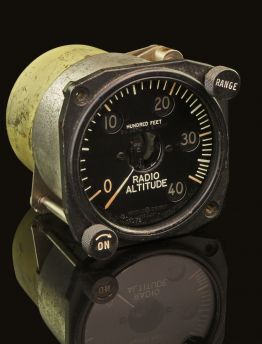- AUST POST SHIPPING
- 0438 654 235
- info@recoverycurios.com
- P.O. Box 7640 Cairns QLD Australia, 4870
-
0
Shopping Cart


CURTISS SB2C HELLDIVER
 Some aircraft have a laboured beginning and an equally troubled adolescence which they struggle to overcome the whole of their operational life. The Curtiss SB2C Helldiver was no exception.
Some aircraft have a laboured beginning and an equally troubled adolescence which they struggle to overcome the whole of their operational life. The Curtiss SB2C Helldiver was no exception.
Designed to replace the carrier-launched highly successful but ageing Douglas SBD Dauntless, the Helldiver whilst being much faster than the SBD, was significantly larger and far heavier.
The Helldiver’s development, early testing and initial deployment were plagued with design and stability issues largely centred around its small tail plane and rudder, shortened fuselage and underpowered engine.
Early pilots found it extremely difficult and temperamental to fly and a number of early prototypes simply broke up in flight initiating a scathing government review of its poor design and inadequate flight characteristics.
-1423-4.jpg) Curtiss went back to the drawing board and the tailplane and rudder were enlarged providing greater directional control, the fuselage lengthened for increased longitudinal stability and the engine re-powered with the new R-25600 Twin Cyclone 1900hp engines and the 3 bladed prop replaced with a four.
Curtiss went back to the drawing board and the tailplane and rudder were enlarged providing greater directional control, the fuselage lengthened for increased longitudinal stability and the engine re-powered with the new R-25600 Twin Cyclone 1900hp engines and the 3 bladed prop replaced with a four.
The new SBD 2C versions were introduced in early 1944 and saw action in the Marianas, Philippines, Iwo Jima and Okinawa campaigns and were partly responsible for the sinking of the Japanese battleship the Yamato.
 Although designed with an enclosed bomb bay to facilitate the carrying of heavier ordinance, operational experience found that the USN’s Grumman F6F Hellcat and F4U Corsairs could carry an equally heavy bomb load whilst also vastly more capable of defending themsleves against enemy fighters.
Although designed with an enclosed bomb bay to facilitate the carrying of heavier ordinance, operational experience found that the USN’s Grumman F6F Hellcat and F4U Corsairs could carry an equally heavy bomb load whilst also vastly more capable of defending themsleves against enemy fighters.
But to give the Helldiver its due, its initial design as a dive bomber still proved highly successful, enabling the two seater aircraft to deliver its payload with pinpoint accuracy and its operational range was far beyond that of the single seat fighters - a critical requirement for any carrier-launched attack aircraft.
By the end of the war in the Pacific over 7140 SB2C’s had been built and a number were also operated by the Australian forces who like their US counterparts, struggled with their poor handling and soon returned them to the US with the introduction of the marinised Bristol Beaufighter.
The French continued on through the early to mid 1950s operating the Helldiver as a ground support and attack aircraft during the First Indochina War.
All SB2C Helldiver Instruments listed below come complete with detailed Scale Model, Mango Wood Stand & Plaque plus Printed Fact Sheet featuring photo of instrument in aircraft cockpit.
Return to VINTAGE ORIGINAL AIRCRAFT INSTRUMENTS
- LAND
- SEA
- AIR
- VINTAGE ORIGINAL AIRCRAFT INSTRUMENTS
- HAWKER TYPHOON
- VICKERS WELLINGTON
- FAIREY GANNET
- RYAN ST-A SPORTS TRAINER
- DE HAVILLAND TIGER MOTH
- HAWKER HUNTER
- Mc DONNELL DOUGLAS KC-10 AERIAL TANKER
- SOPWITH CAMEL
- AIRCO DH.1 AND DH.2
- JUNKERS JU 87
- CURTISS C-46 COMMANDO
- HANDLEY PAGE HAMPDEN
- SUPERMARINE SEAFIRE
- B-25 MITCHELL BOMBER
- BRISTOL BLENHEIM
- ENGLISH ELECTRIC LIGHTNING
- HAWKER TEMPEST MkVI
- YAKOVELOV YAK - 3
- FOCKE-WULF FW190
- FOLLAND GNAT
- AIRSPEED OXFORD
- SHORT STIRLING
- AVRO ANSON
- DOUGLAS C-133 CARGOMASTER
- HANDLEY PAGE VICTOR BOMBER
- DE HAVILLAND SEA VENOM
- VICKERS VALIANT BOMBER
- DOUGLAS A-26 INVADER
- GRUMMAN S2F TRACKER
- SUPERMARINE SPITFIRE
- LOCKHEED P2-V NEPTUNE
- P-51 MUSTANG
- BRISTOL BEAUFIGHTER
- DE HAVILLAND MOSQUITO
- B-26 MARTIN MARAUDER
- P3 ORION
- DOUGLAS A-20 HAVOC
- P-39 AIRACOBRA
- AVRO SHACKLETON
- B-17 FLYING FORTRESS
- B-24 LIBERATOR
- MESSERSCHMITT BF-110
- MESSERSCHMITT BF-109
- BRISTOL BEAUFORT
- KAWASAKI Ki-45 (NICK) INTERCEPTOR
- C-130 HERCULES
- CAC BOOMERANG
- AVRO LANCASTER
- GRUMMAN F4F WILDCAT
- F4U VOUGHT CORSAIR
- WESTLAND LYSANDER
- P-47 REPUBLIC THUNDERBOLT
- NORTH AMERICAN T-6 TEXAN - HAVARD
- C-47 SKYTRAIN
- DOUGLAS SBD DAUNTLESS
- CAC WIRRAWAY
- PBY CATALINA
- P-40 WARHAWK
- FAIREY SWORDFISH
- P-38 LIGHTNING
- HAWKER HURRICANE
- CURTISS SB2C HELLDIVER
- GRUMMAN F6F HELLCAT
- SEAKING HELICOPTER
- SEAHAWK HELICOPTER
- DOUGLAS A4G SKYHAWK
- GRUMMAN TBF AVENGER
- HANDLEY PAGE HALIFAX
- DOUGLAS SKYRAIDER AE-1
- GLOSTER METEOR
- JUNKERS JU-88
- F-86 SABRE JET
- SHORT SUNDERLAND
- B-29 SUPER FORTRESS
- F-9F GRUMMAN PANTHER
- F-100D SUPER SABRE
- BELL UH-1 HUEY HELICOPTER
- AVRO VULCAN STRATEGIC BOMBER
- CANBERRA BOMBER
- DHC-4 CARIBOU
- BLACKBURN BUCCANEER
- DE HAVILLAND VAMPIRE JET
- HAWKER SEA FURY
- LOCKHEED HUDSON
- LOCKHEED EC-121 WARNING STAR
- SEPECAT JAGUAR
- HAWKER SIDDELEY NIMROD
- HAWKER SIDDELEY HARRIER
- ARADO AR 196
- VOUGHT OS2U KINGFISHER
- LOCKHEED ELECTRA
- NORTHROP P-61 BLACK WIDOW
- BOEING CH-47 CHINOOK
- LOCKHEED PV-1 VENTURA
- BOEING P26-A 'PEASHOOTER'
- Ilyushin Il-2 ‘Sturmovik’
- WESTLAND WESSEX
- FAIREY FIREFLY
- VINTAGE AVIATION COLLECTABLES
- VINTAGE COLLECTABLE MODEL AIRCRAFT KITS
- RETRO STYLE METAL AIRCRAFT COLLECTABLES
- VINTAGE ORIGINAL AIRCRAFT INSTRUMENTS






